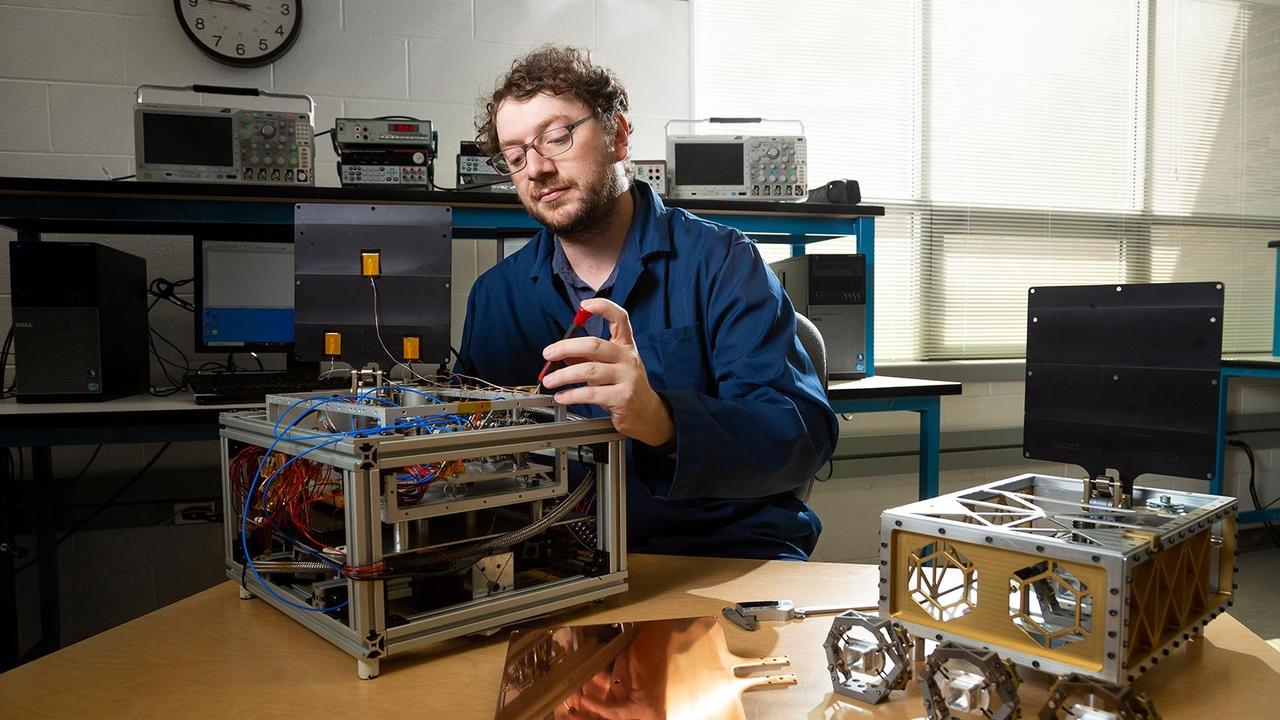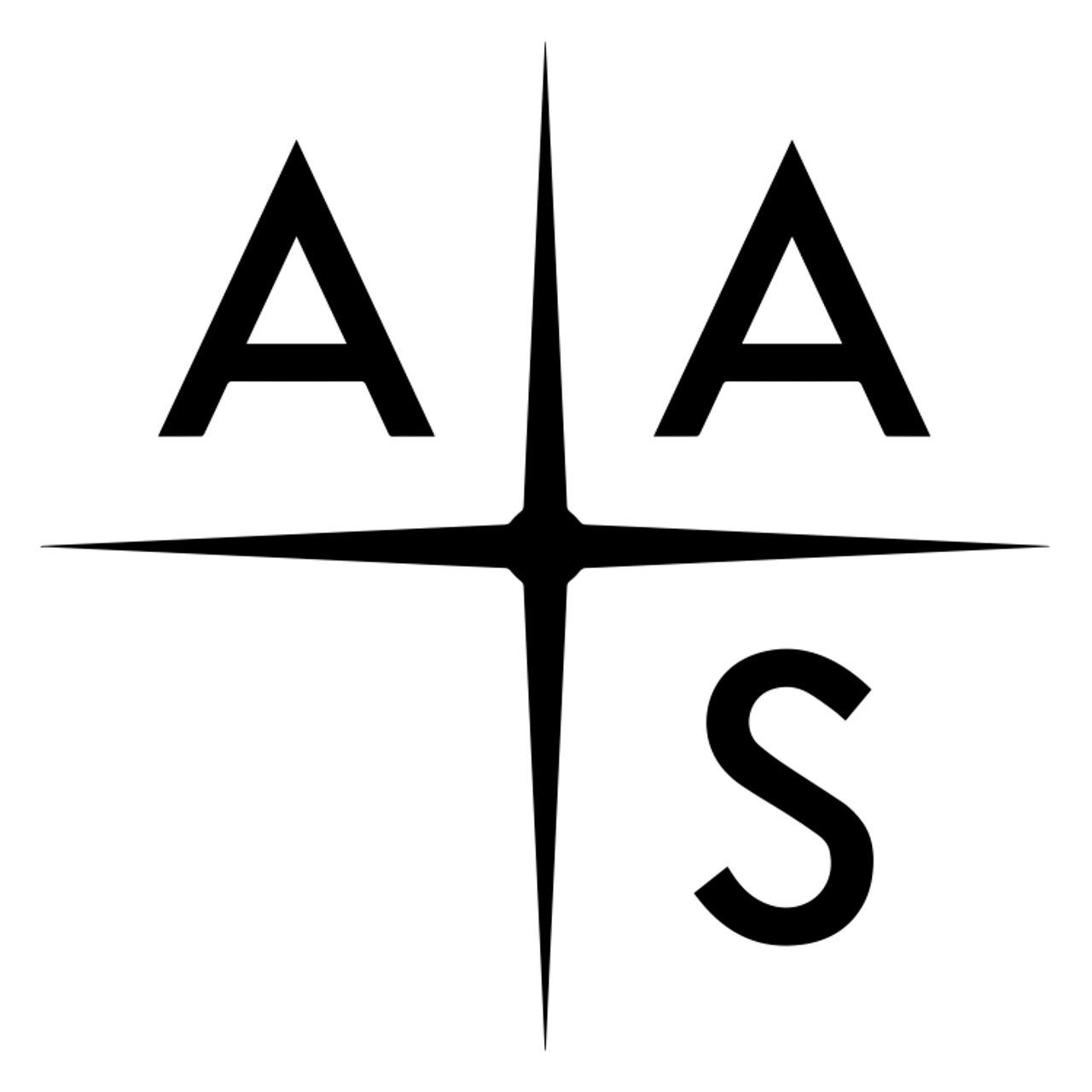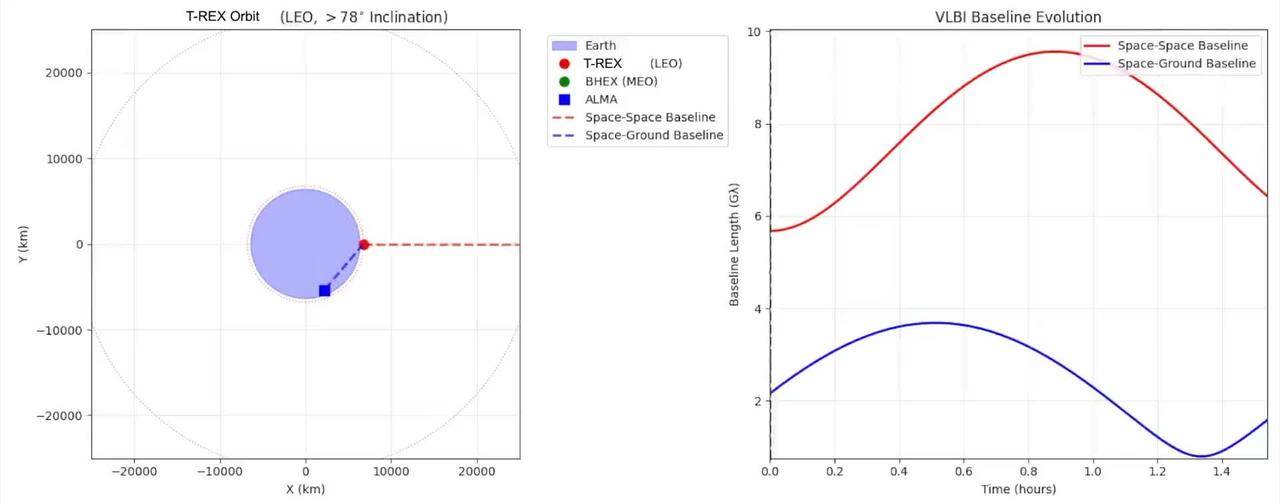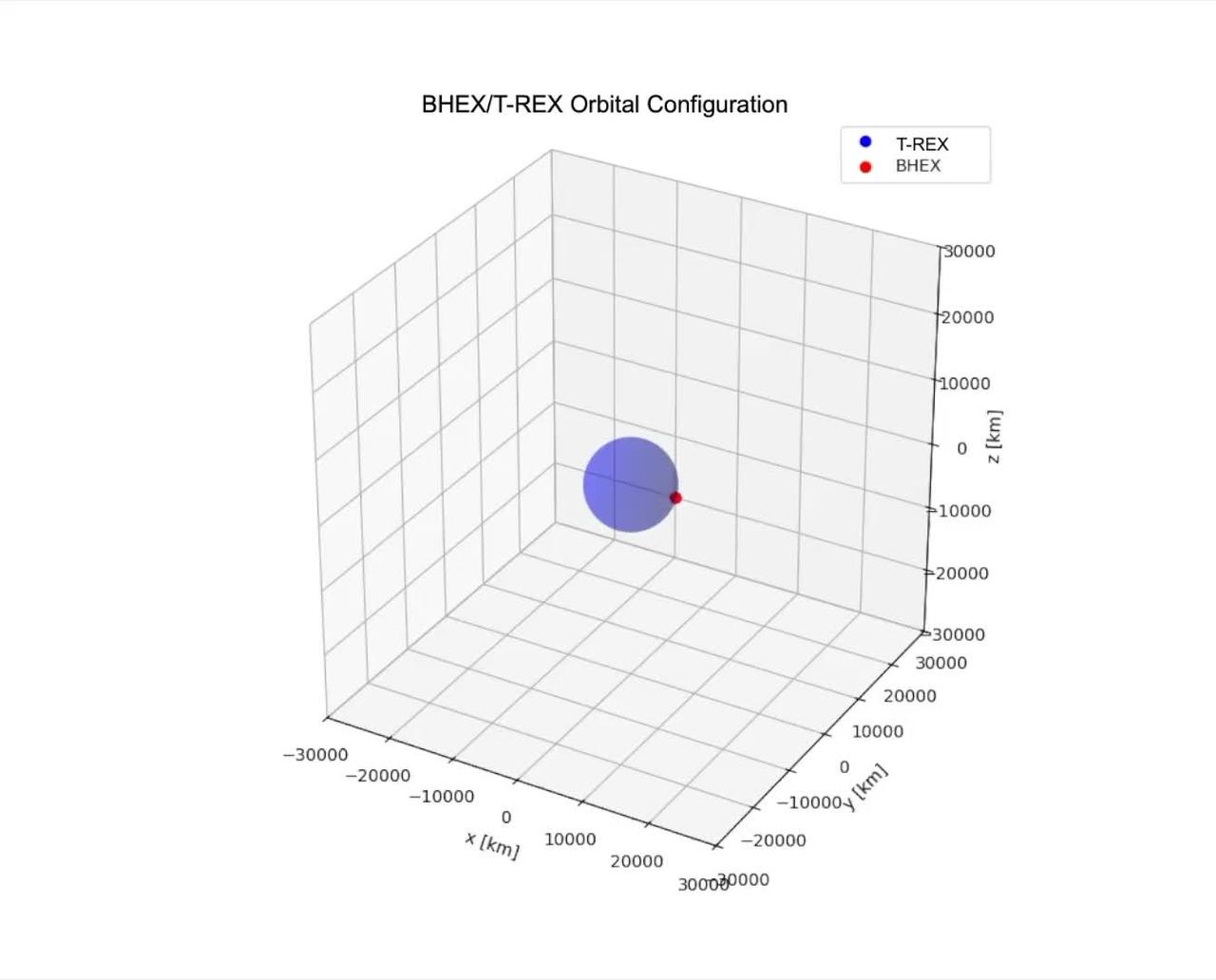The Event Horizon Telescope (EHT) captured the first image of a black hole in 2019, providing direct confirmation of the existence of black holes. T-REX (Time Resolving Explorer) is a satellite mission which seeks to take the next leap: Capturing the first video of a black hole. T-REX will be an 87 kg, $25 milion radio satellite in low-earth orbit operating at 86 GHz. It will conduct a targeted survey of >25 secondary science targets, enabling population studies of supermassive black hole masses, spins, and luminosities. By virtue of orbiting in LEO, T-REX would enable rapid and dense interferometric coverage for Sgr A* & M87 at 86 GHz, advancing direct imaging of the photon ring. If successful, T-REX would also be the first satellite to achieve Space-Space VLBI by co-observing targets with BHEX in MEO.

Simulations created by the T-REX team to constrain SWaPC requirements and the feasibility of Primary Science Objectives. All of our code is open-source.
-
Using Ben Hudson's SpaceVLBI library to simulate (u,v) coverage for T-REX at 86 GHz. Currently supports only Space-Ground baselines and single-frequency observations.
-
Using Aditya Tamar's approach to simulate the impact of ISM scattering on T-REX's observations of Sgr A* at 86 GHz.
-
Determining Duty Cycle of T-REX given Quantization Scheme (1-bit or 2-bit), and amount of ground contact during LEO orbit.
-
This notebook calculates the visibility amplitude for 25 Secondary Science Targets (SSTs), the Thermal Noise Constraint on the Space-Space & Space-Ground baseline, and the Antenna Diameter.
-
Calculates Minimum Integration Time for T-REX, given a target thermal noise floor and SEFD (System Equivalent Flux Density).
-
Simulates the amount of time required for T-REX to rotate by an angle θ to point at a new radio target, given the maximum spin rate, moment of inertia, and net torque.























